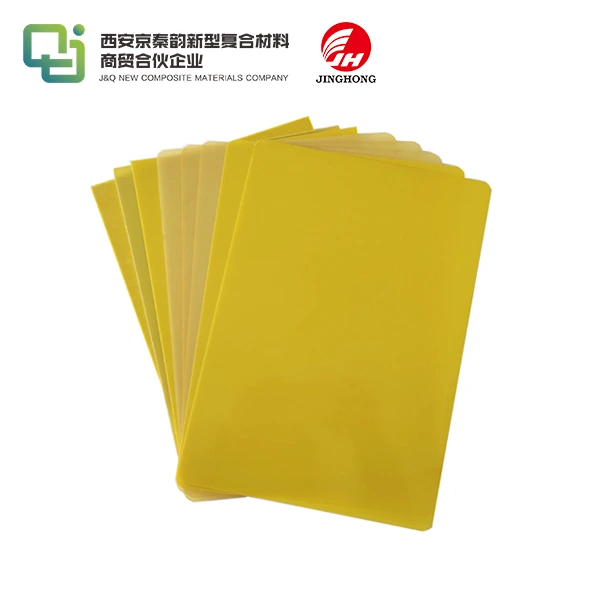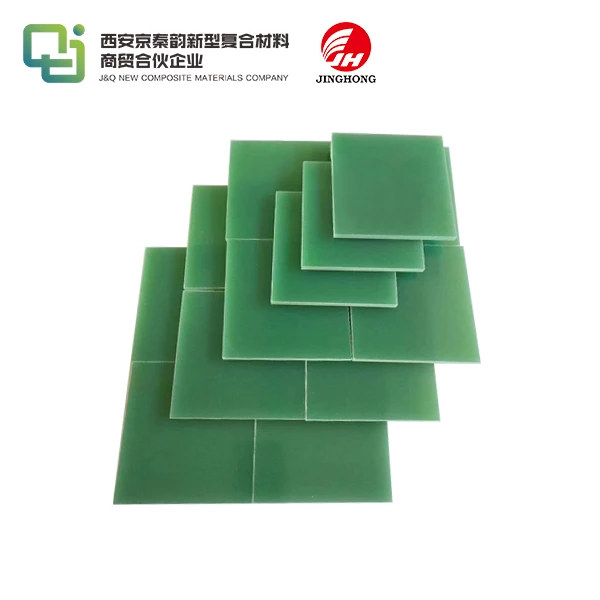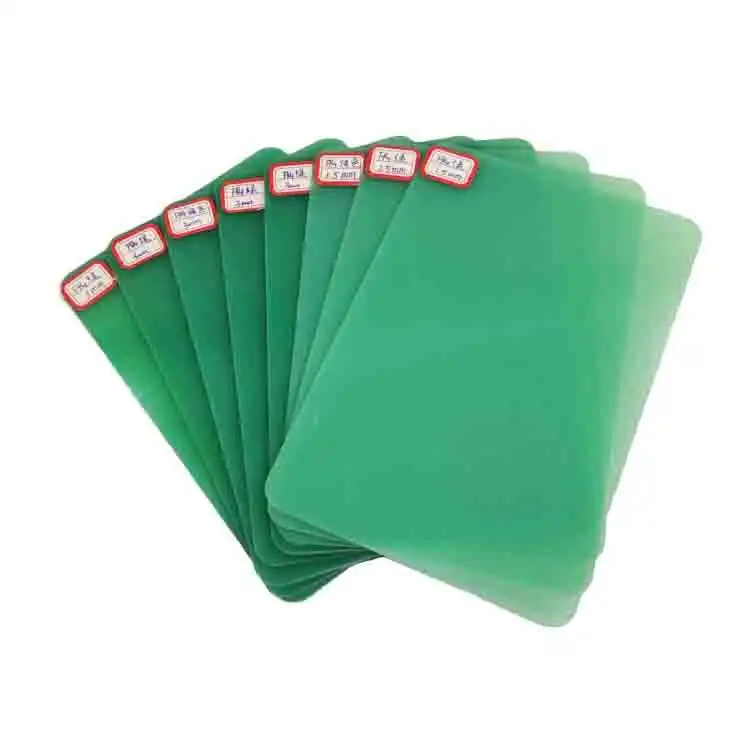Why Moisture Control Matters in FR4 Storage?
2025-08-18 15:48:46
Moisture control is paramount in FR4 storage due to the material's hygroscopic nature. FR4, a widely used substrate in printed circuit boards (PCBs), can absorb moisture from the surrounding environment, leading to potential performance issues and manufacturing defects. Proper moisture management ensures the integrity of FR4 sheets, maintaining their electrical and mechanical properties. Uncontrolled humidity can cause delamination, warping, and compromised insulation resistance, ultimately affecting the reliability of electronic components. By implementing effective moisture control measures, manufacturers can preserve the quality of FR4 sheets, extend their shelf life, and guarantee optimal performance in final products.
How Does Moisture Affect the Electrical Performance of FR4?
Impact on Dielectric Properties
Moisture absorption can significantly alter the dielectric properties of FR4 sheets. As water molecules infiltrate the material, they can cause variations in the dielectric constant and dissipation factor. These changes can lead to impedance mismatches, signal integrity issues, and increased signal loss in high-frequency applications. The presence of moisture can also reduce the material's insulation resistance, potentially compromising its effectiveness as an electrical insulator.
Conductive Anodic Filament (CAF) Formation
Excessive moisture in FR4 can facilitate the formation of conductive anodic filaments (CAF). This electrochemical phenomenon occurs when copper ions migrate through the glass fibers of the FR4 substrate, creating conductive paths between adjacent conductors. CAF growth can result in short circuits, reduced reliability, and premature failure of electronic assemblies. Proper moisture control is crucial in mitigating the risk of CAF formation and ensuring long-term product reliability.
Thermal Stability and Dimensional Changes
Moisture absorption can affect the thermal stability of FR4 sheets. When exposed to high temperatures during manufacturing processes like soldering, absorbed moisture can rapidly expand, leading to delamination or "popcorning" effects. These issues can cause structural damage to the PCB and compromise its electrical performance. Additionally, moisture-induced dimensional changes can affect the accuracy of hole positioning and layer registration, potentially leading to manufacturing defects and reduced yield rates.

Proper Storage Conditions and Humidity Limits
Optimal Temperature and Humidity Ranges
To maintain the integrity of FR4 sheets, it's essential to store them within specific temperature and humidity ranges. The ideal storage environment typically falls between 20°C to 25°C (68°F to 77°F) and 30% to 50% relative humidity. These conditions help prevent moisture absorption while avoiding extreme temperatures that could cause thermal stress or degradation of the material's properties. Consistent monitoring and control of these parameters are crucial for long-term storage of FR4 sheets.
Moisture Sensitivity Levels (MSL)
FR4 sheets are classified according to Moisture Sensitivity Levels (MSL), which indicate their susceptibility to moisture-induced damage. Understanding and adhering to these classifications is vital for proper storage and handling. For instance, MSL 3 materials are more sensitive to moisture than MSL 1 materials and require stricter storage conditions. Manufacturers should implement storage protocols that align with the specific MSL of their FR4 sheets to prevent moisture-related issues during subsequent processing and assembly.
Storage Time Limitations
Even under optimal storage conditions, FR4 sheets have a finite shelf life before they may require reconditioning or special handling. It's crucial to implement a first-in-first-out (FIFO) inventory management system to ensure that older stock is used before it exceeds recommended storage durations. Regularly assessing the moisture content of stored FR4 sheets and adhering to manufacturer-specified storage time limits can help maintain material quality and prevent potential manufacturing issues.
Desiccants, Vacuum Packing, and Climate-Controlled Warehousing
Effective Use of Desiccants
Desiccants play a crucial role in moisture control for FR4 storage. These moisture-absorbing agents, such as silica gel or molecular sieves, can be placed within packaging to maintain a dry environment. When using desiccants, it's important to consider their capacity and replace them as needed. Some advanced desiccant systems include color-changing indicators that signal when replacement is necessary, ensuring continuous protection against moisture absorption.
Vacuum Packing Techniques
Vacuum packing is an effective method for protecting FR4 sheets from moisture during storage and transportation. By removing air and sealing the material in moisture-barrier bags, vacuum packing significantly reduces the risk of humidity exposure. This technique is particularly useful for long-term storage or when shipping FR4 sheets to regions with high humidity. It's crucial to use high-quality, moisture-resistant packaging materials and ensure proper sealing to maintain the integrity of the vacuum-packed FR4 sheets.
Climate-Controlled Warehousing Solutions
Implementing climate-controlled warehousing is a comprehensive approach to moisture control in FR4 storage. These facilities use advanced HVAC systems and dehumidification equipment to maintain constant temperature and humidity levels. Climate-controlled warehouses often incorporate real-time monitoring systems that alert operators to any deviations from optimal conditions. This level of control is especially important for large-scale storage of FR4 sheets or when dealing with highly moisture-sensitive materials.
Conclusion
Effective moisture control is indispensable in FR4 storage to maintain the material's electrical and mechanical properties. By understanding the impact of moisture on FR4 performance and implementing proper storage conditions, manufacturers can ensure the longevity and reliability of their electronic components. Utilizing techniques such as desiccants, vacuum packing, and climate-controlled warehousing further enhances moisture protection. Prioritizing moisture control not only preserves the quality of FR4 sheets but also contributes to the overall success and reliability of electronic products in various industries.
Contact Us
For more information about our FR4 sheets and moisture control solutions, please contact us at info@jhd-material.com. Our team of experts is ready to assist you in optimizing your FR4 storage practices and ensuring the highest quality for your electronic manufacturing needs.
References
1. Zhang, L., & Wang, Y. (2020). Moisture absorption behavior and its effect on dielectric properties of FR4 substrate. Journal of Electronic Materials, 49(8), 4721-4729.
2. Chen, X., et al. (2019). Effect of moisture absorption on the electrical properties of FR-4 laminates. IEEE Transactions on Components, Packaging and Manufacturing Technology, 9(5), 914-922.
3. Tencer, M., & Moss, J. S. (2018). Humidity management of outdoor electronic equipment: Methods, pitfalls, and recommendations. IEEE Transactions on Components and Packaging Technologies, 25(1), 66-72.
4. IPC-1601A. (2016). Printed Board Handling and Storage Guidelines. Association Connecting Electronics Industries.
5. Sood, B., & Pecht, M. (2017). Controlling moisture in printed circuit boards. IPC APEX EXPO Technical Conference, 1-8.
6. Suhir, E., et al. (2019). Moisture sensitivity and reliability of electronic packages and systems. In Moisture Sensitivity of Plastic Packages of IC Devices (pp. 1-27). Springer, Cham.







